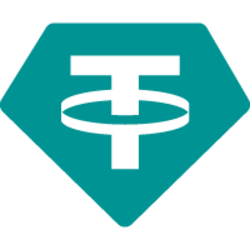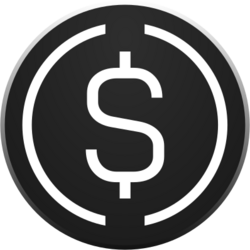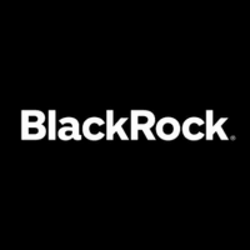The emergence of Programmable Royalty Tokens is reshaping the way value flows in the digital creator economy. These blockchain-based instruments allow creators, artists, developers, and entrepreneurs to receive royalties automatically, without needing middlemen or third-party platforms. This automation empowers creators to build sustainable income streams and streamline revenue sharing.
The Traditional Creator Economy: Slow, Centralized, and Costly
For decades, artists and content creators have relied on centralized platforms—record labels, publishers, or digital marketplaces—to collect and distribute royalties. The system operates at a sluggish pace, with little transparency and high administrative overhead. Musicians may wait months for payments. Authors often earn just a small portion of the total revenue from their published works. YouTubers face demonetization risks and opaque algorithms.
In this fragmented environment, creative individuals frequently lose control over their work and earnings. Even platforms designed to help creators monetize—like Patreon or Substack—take a portion of earnings and offer limited flexibility in how royalties are managed. Enter the blockchain revolution, where smart contracts can change everything.
How Blockchain Enables Automated Royalty Distribution
Smart contracts are programmable agreements executed on blockchain networks. These contracts allow for the creation of digital assets—like NFTs or tokens—that embed rules for revenue sharing. With Programmable Royalty Tokens, every time an asset is sold, licensed, or transferred, the agreed-upon share is automatically routed to the relevant stakeholders.
Consider a scenario where an indie music album is tokenized as NFTs, each embedded with its own smart contract. When a fan purchases or resells a track, the smart contract instantly allocates, say, 80% to the artist, 10% to the producer, and 10% to a marketing partner. No emails, no accountants, no waiting.
Programmable Royalty Tokens vs Traditional Royalties
| Feature | Traditional Royalties | Programmable Royalty Tokens |
|---|---|---|
| Speed of Payout | Weeks to months | Instant |
| Transparency | Limited | Fully transparent and auditable |
| Cost Efficiency | High admin costs | Low transaction fees |
| Flexibility of Terms | Predefined by platforms | Fully customizable |
| Ownership Rights | Often retained by middlemen | Fully owned by creators |
The contrast couldn’t be clearer. Programmable Royalty Tokens not only accelerate and automate payments but also restore control and ownership to creators.
Use Cases of Programmable Royalty Tokens in Music, Art, and Literature
Music
Artists now have the power to convert their albums or individual tracks into tokens, allowing shared ownership and automated royalty payments. A track can be sold as a limited NFT series, with resale royalties going back to the creator. Fans become investors, collaborators, and stakeholders in the artist’s journey.
Digital Art
NFT platforms like SuperRare and Foundation are early examples. By embedding smart contracts in their creations, artists ensure they earn a share each time their work is resold—a transformative upgrade from traditional art markets where original creators typically gain nothing from secondary sales.
Publishing and E-Books
Authors can release digital books embedded with revenue-sharing tokens. Co-authors, illustrators, and editors can receive their share in real time with every sale. This transparency also helps mitigate disputes about contributions and earnings.
Programmable Royalty Tokens in the Gaming Industry
The gaming industry is primed for disruption. Indie developers can now tokenize in-game assets, such as skins, weapons, or land. When a player sells an item to another, creators receive royalties automatically. This not only incentivizes developers but also fosters thriving in-game economies.
Furthermore, gaming guilds and e-sports teams can set up decentralized royalty arrangements, where streamers and influencers earn percentages from merchandise, ticket sales, or in-game item sales.
Legal and Compliance Considerations of Programmable Royalty Tokens
The adoption of Programmable Royalty Tokens raises new legal and regulatory questions:
- Securities Law: Are these tokens considered securities in some jurisdictions?
- Taxation: How are royalties taxed when distributed through smart contracts?
- Jurisdiction: Blockchain transcends borders—who enforces disputes?
Legal frameworks are evolving. Clear regulatory frameworks are essential for mainstream adoption and long-term viability. Platforms building on this technology must prioritize legal compliance and user education.
Empowering Micro-Entrepreneurs and Global Creators
One of the most transformative aspects of this innovation is inclusivity. Creators from the Global South, previously locked out of traditional markets due to payment issues or lack of infrastructure, can now participate on equal footing. A visual artist from Nairobi can sell a limited collection on-chain and earn fair royalties every time the work changes hands, whether in New York, Paris, or Tokyo.
Additionally, micro-entrepreneurs—podcasters, meme creators, even fanfiction writers—can monetize their work in new ways. Communities can crowdfund content creation and receive ongoing revenue for their support.
Integration of Programmable Royalty Tokens with Web3 Platforms
Decentralized platforms like Zora, Mirror, and Sound.xyz are leading the charge in integrating Programmable Royalty Tokens. These platforms offer creators tools to mint, manage, and monetize their work without intermediaries.
Mirror, for instance, allows bloggers to tokenize content, attach royalties, and share ownership with early supporters. Sound.xyz enables musicians to release songs with pre-programmed revenue splits.
The end goal is a creator-owned ecosystem—autonomous, efficient, and fair.
Challenges and Limitations of Programmable Royalty Tokens
Despite the promise, there are hurdles:
- User Onboarding: Many creators are unfamiliar with crypto wallets and gas fees.
- Market Volatility: Token values can fluctuate significantly.
- Scalability: Network bottlenecks and unpredictable transaction costs can hinder user adoption.
- Interoperability: Not all tokens or platforms are cross-compatible.
Solutions include layer-2 scaling, creator-focused onboarding experiences, and bridges between ecosystems. Education is critical. As user interfaces improve, barriers will fall.
The Future: Dynamic Royalty Logic and AI Integration
The next generation of Programmable Royalty Tokens will feature dynamic logic—where royalties adjust based on usage, geography, or engagement metrics. For example, if a song gains traction in a trending video, the smart contract might temporarily increase the royalty rate for the artist to reflect the spike in attention.
Moreover, integrating AI can help detect resale events, forecast creator income, or dynamically adjust royalty percentages based on market trends and audience growth.
Imagine a platform where royalties self-adjust based on performance, removing the need for manual renegotiation or oversight.
Case Study: Royal.io and Blockchain-Based Music Rights
Royal.io—established by the acclaimed music producer 3LAU—allows fans to purchase fractional ownership in songs through NFTs. These NFTs contain Programmable Royalty Tokens that grant holders a cut of streaming royalties. This model turns fans into investors and strengthens the bond between creator and community.
To date, Royal.io has collaborated with prominent musicians, including Nas and Diplo. The result? Fans feel ownership and support the music more actively. Artists receive funding up front and earn passive income from secondary trades and long-term royalties.
Creator DAOs and Collaborative Revenue Sharing
Decentralized Autonomous Organizations (DAOs) built around creative projects are on the rise. A group of creators can launch a DAO, release content, and distribute income transparently using smart contracts. Royalties from music, film, or digital goods flow into the DAO and are shared per pre-set rules.
This shifts creative collaboration from trust-based to code-based systems. With Programmable Royalty Tokens, disputes are minimized, and everyone knows their share.
Conclusion: A New Paradigm for the Creator Economy
Programmable Royalty Tokens are not a passing trend—they represent a structural shift in how digital value is created, distributed, and consumed. By automating and decentralizing royalty flows, they empower creators, eliminate inefficiencies, and enable new business models.
As platforms mature and legal clarity emerges, more creators will migrate to this new model. The result will be a more inclusive, equitable, and sustainable creator economy—running on autopilot.



















